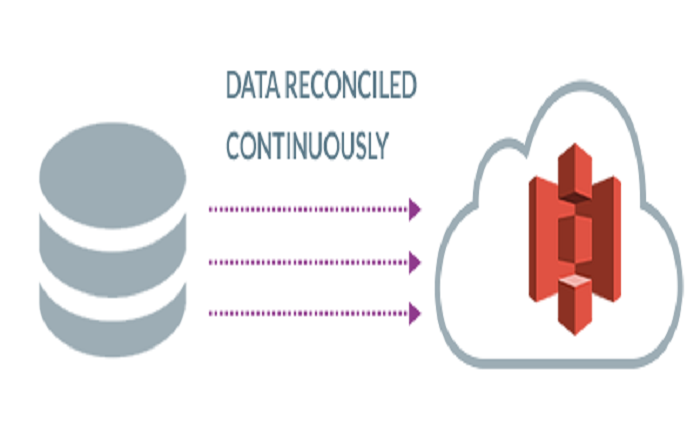Python , And Its Role In Data Mining Softwares
Data mining is about using powerful systems and automation for searching and analyzing large data sets to find beneficial information. There are many data mining software ranges from RapidMiner, KNIME Analytics Platform, Panda, scikit-learn, Orange, NumPy, SAS Oracle Data Miner, and more.
Python is used behind many data mining software. With its rich ecosystem of libraries such as Pandas, NumPy, and Matplotlib, this programming language enables analysts and data scientists to manipulate, explore, and visualize data with unmatched efficiency. Interested in knowing more about Python’s role in data mining and data analysis? Be with us.
Data Mining Python – A Brief
Python was released in 1991 by a Dutch programmer named Guido van Rossum. Packed with high-level, efficient data structures and sporting a practical object-oriented programming approach, organizations like Python for its simplicity and power. It comes with an interpreted nature, simple syntax, and dynamic typing for scripting and developing applications fast.
Be it using Python for web applications on a server, handling large amounts of data, or performing complex mathematical calculations, it efficiently does all sorts of tasks.
Data mining is prevalent across industries and is the cornerstone of analytics efforts. Companies rely heavily on this technique for strategy formulation, thanks to the relevant data insights it offers. But how does Python fit into data mining software? Let’s find out.
Python Powered Data Mining Softwares And Tools
Here are some Python tools commonly used in data mining:
Pandas
Pandas is an open-source Python library popular for data analysis, data science, and machine learning tasks. It’s based on the Numpy library supporting multi-dimensional arrays. This flexible Python module works wonders with table form data.
Seaborn
Seaborn is a Python machine-learning tool that visualizes statistical models, such as heatmaps.
NumPy
NumPy (Numerical Python) is exceedingly useful for executing scientific computations. It is a good choice for operating on simple to complex arrays. When used in data mining software, NumPy brings useful features like n-arrays and matrices. NumPy can process the array, storing the same data type value.
Keras
Keras is a powerful and easy-to-use open-source Python framework for building and testing deep learning models. Covering Theano and TensorFlow, Keras helps create/train neural network models.
TensorFlow
TensorFlow is a machine learning and deep learning framework. You can use it for artificial neural network development capable of dealing with large data sets. Google Brain developed this for tasks like object and speech recognition.
Scrapy
This Python library is used for web crawling, aiding in creating spider bots that gather structured data from the net.
Matplotlib
Matplotlib is a widely-used data visualization library that assists in creating 2-D diagrams and graphs. This plotting library offers object-oriented API for you to use charts in programs.
SciKit-Learn
This is the most usable and robust machine-learning library in Python, made with NumPy, SciPy, and Matplotlib. With this data mining Python tool, you can do classification, clustering, regression, and dimensionality reduction. It uses a consistent Python interface to provide data mining and analysis tools.
Plotly
Plotly is a web-based data visualization tool. It comes with various handy visualizations that you can find on the Plot.ly website.
How Is Python Useful For Data Analysis, And Data Mining?
Python is favored for data analysis due to its comprehensive libraries, flexibility, and user-friendly syntax.
Libraries
Python has numerous libraries like NumPy, Pandas, Matplotlib, Seaborn, and Scikit-learn. All these essential libraries are good for myriad data operations
Exploratory Data Analysis (EDA)
Python has statistical functions and visualization tools. Those tools streamline EDA, allowing analysts to examine data distributions, correlations, and trends swiftly.
Data Cleaning and Preparation
Data mining Python, when used with Pandas, handles missing data, outliers, and inconsistencies with utmost ease.
Statistical Analysis
Python-powered libraries like SciPy and Statsmodels come into play here. Python is the ideal choice for statistical analysis for scientific and technical computing.
Web Scraping
Python libraries like BeautifulSoup and Scrapy are widely used for web scraping to glean website data.
Machine Learning
How can we miss Python’s role in Machine learning, and various data mining softwares? It is the go-to language for machine learning tasks with popular libraries like Scikit-learn, TensorFlow, and PyTorch. These libraries aid in the building and training of machine-learning models.
Big Data
Python seamlessly integrates with big data technologies with the PySpark library.
How Can You Assess And Choose The Best Data Mining Software?
Several key factors come into play when choosing a data mining tool suitable for your company.
Is The Software or Tool Compatible With Various Data Formats?
Your data mining tool should aid in seeking information from different sources. Therefore, you must opt for a tool capable of managing big data, structured and unstructured data, and specific data for your industry.
First, consider your business requirements and data analytics objectives, and then choose the tool. Moreover, ensure that the selected data mining software is compatible with generative AI and AI model data, IoT and sensor data, or social media and customer interaction data.
Is Your Data Mining Tool Scalable?
Your selected data mining tool should support multiple algorithms and methods and offer extensive customization. Small and large companies require data mining software capable of expanding with growing data analysis projects and needs.
Additionally, be it in Data mining Python or other tools, it should process substantial data amounts at high speeds through parallel processing, distributed computing, or a mixture of high-speed processing techniques.
Can Data Mining Software Deliver Superior User Experience?
Efficient data mining tools perform intricate analytics operations for data scientists and non-data professionals. Superior data mining tools come equipped with functions like low-code/no-code capabilities.
That means, users with not so advanced technical knowledge can also use the tool. Moreover, features like drag-and-drop configuration, automation, and modifiable data visualization also adds to better user experience.
Conclusion
Python for data mining and analysis provides a pathway for you to unlock the true potential of data. Using Python’s capabilities in Data mining software can open up a world of opportunities in this data-driven era. Whether it’s in banking, e-commerce or education, the use of Python is loud and clear.







